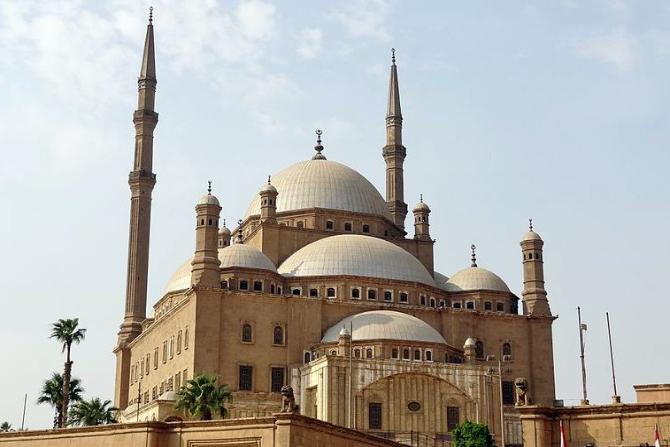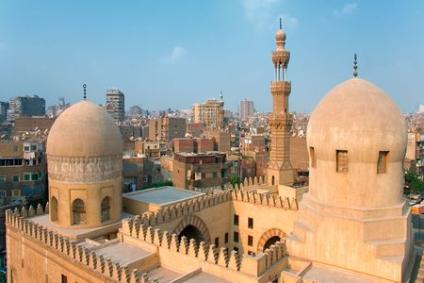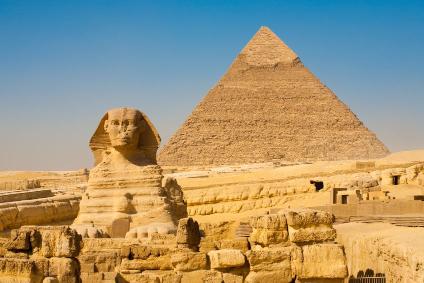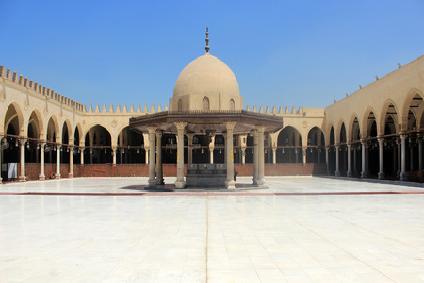This famous mosque is within the Citadel complex is also
called the Alabaster Mosque as the lower 38 feet of the mosque and
forecourt walls are faced with alabaster. The mosque was commissioned by
Muhammad Ali Pasha, ruler of Egypt from 1805 to 1849 in memory of his son,
Tusun Pasha who died in 1816. The mosque was based on the Sultan Ahmed Mosque
in Istanbul and completed in 1848. The Ottoman style mosque is the largest mosque
constructed in the first half of the 19th century. It has a distinct
silhouette with twin minarets and elegant cascading domes which can be seen
from across the city thanks to the Citadel’s elevated position.
When Ottoman ruler Muhammad Ali took over Cairo he had the
Citadel’s Mumluk structures destroyed and the entire complex rebuilt including
the mosque. At the time Ottoman law allowed only the sultan to build mosques
with more than one minaret; when Muhammad Ali had his Cairo mosque built with
two 82 meter high minarets he was sending a message to the Ottoman rulers in
Istanbul that he was not planning on being submissive to their authority. The
mosque has an intricately decorated ceiling, hanging globe lamps and a large cavernous
interior. Some elements of the interior design reflect French rococo influences.
The mihrab and two minbars (pulpits) are unique in having old scalloped edges
and one of the pulpits is covered in alabaster while the other is in the Art
Nouveau style. As you enter the mosque notice the white marble monument to the
right where Muhammad Ali is buried. In the mosque courtyard there is an
ablution fountain and a clock which was gifted to the Ottomans of Cairo by the
French in exchange for the obelisk which now stands in Paris’s Place de la
Concorde.












